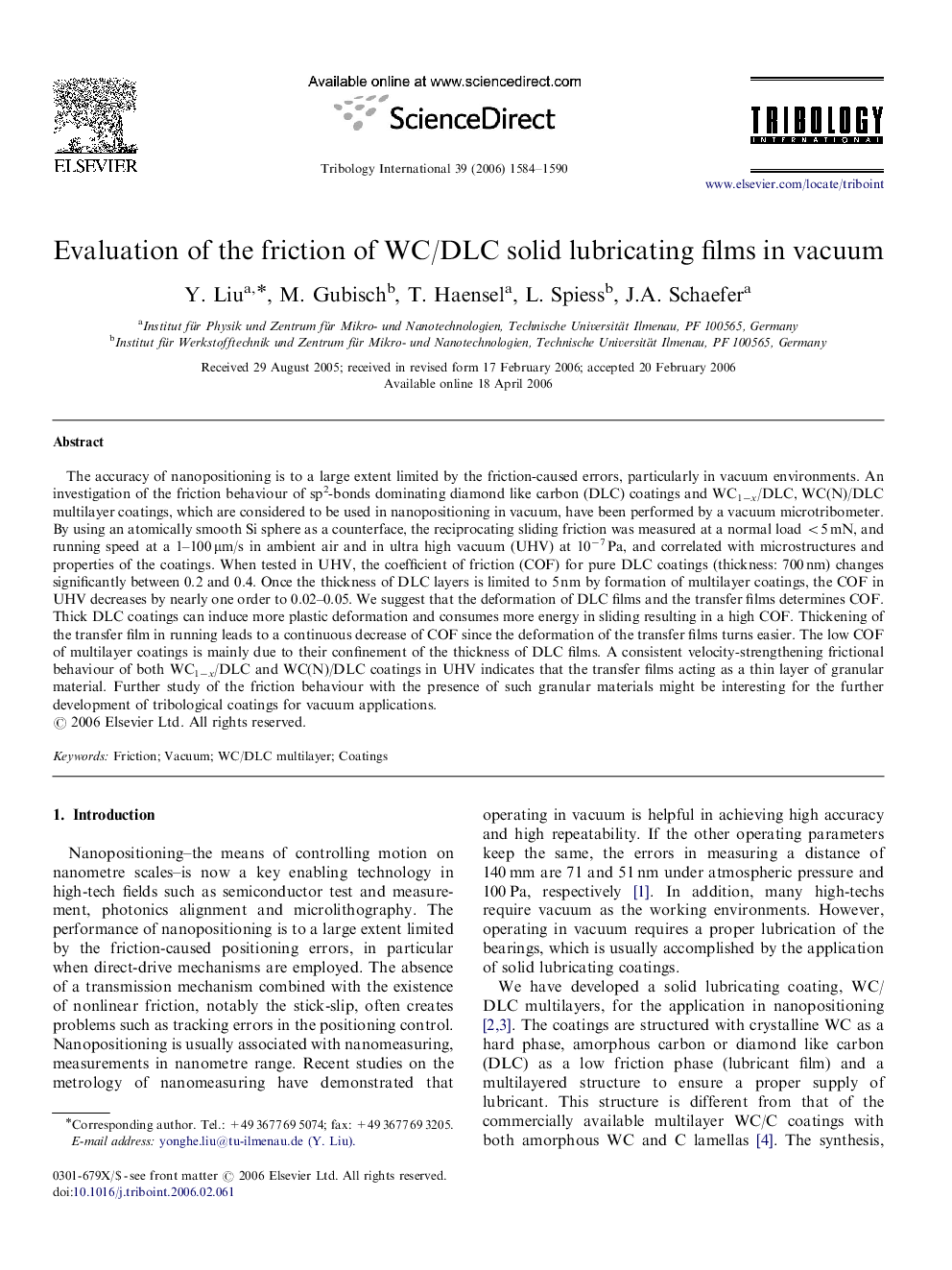| Article ID | Journal | Published Year | Pages | File Type |
|---|---|---|---|---|
| 616647 | Tribology International | 2006 | 7 Pages |
The accuracy of nanopositioning is to a large extent limited by the friction-caused errors, particularly in vacuum environments. An investigation of the friction behaviour of sp2-bonds dominating diamond like carbon (DLC) coatings and WC1−x/DLC, WC(N)/DLC multilayer coatings, which are considered to be used in nanopositioning in vacuum, have been performed by a vacuum microtribometer. By using an atomically smooth Si sphere as a counterface, the reciprocating sliding friction was measured at a normal load <5 mN, and running speed at a 1–100 μm/s in ambient air and in ultra high vacuum (UHV) at 10−7 Pa, and correlated with microstructures and properties of the coatings. When tested in UHV, the coefficient of friction (COF) for pure DLC coatings (thickness: 700 nm) changes significantly between 0.2 and 0.4. Once the thickness of DLC layers is limited to 5 nm by formation of multilayer coatings, the COF in UHV decreases by nearly one order to 0.02–0.05. We suggest that the deformation of DLC films and the transfer films determines COF. Thick DLC coatings can induce more plastic deformation and consumes more energy in sliding resulting in a high COF. Thickening of the transfer film in running leads to a continuous decrease of COF since the deformation of the transfer films turns easier. The low COF of multilayer coatings is mainly due to their confinement of the thickness of DLC films. A consistent velocity-strengthening frictional behaviour of both WC1−x/DLC and WC(N)/DLC coatings in UHV indicates that the transfer films acting as a thin layer of granular material. Further study of the friction behaviour with the presence of such granular materials might be interesting for the further development of tribological coatings for vacuum applications.
